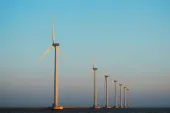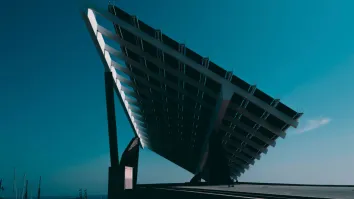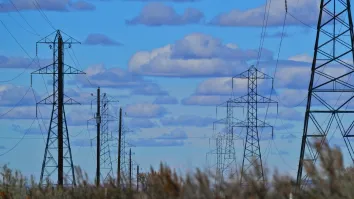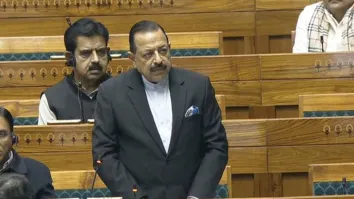
Oracle Power in talks for $1.4b financing of hybrid RE plant in Pakistan
The 1.3 GW wind and solar plant may start supplying power to 1.2 million houses by 2028.
London-based Oracle Power PLC is in talks with investors so it could start building a $1.4b hybrid renewable energy plant in Pakistan’s Gharo-Jhimpir wind corridor next year, according to its CEO.
The project is expected to offer energy-starved citizens more affordable power, whilst increasing the share of clean energy in the South Asian country’s power mix, Oracle Power CEO Naheed Memon told Asian Power. “It's not going to be a whole lot, but it will be a reasonable input into the system.”
The 1.3 gigawatt (GW) renewable energy (RE) project spans 2,830 hectares in the Sindh region and will feature 800 megawatts (MW) of solar capacity and 500 MW of wind power, as well as a 260 MW battery energy storage system.
Memon said getting a loan to kickstart the project, which will cost $1.2b to $1.4b, is a challenge, noting that the “investment appetite” of development institutions like the International Finance Corporation and British International Investment does not align with Oracle Power’s requirements.
“Hence, we would like to deploy this in phases so that we can actually start to build it in 100, 200 tranches of 200 to 300 MW in one go, and that is something which is more aligned with investors’ appetite,” she said.
Oracle Power aims to start operating the plant, which will supply electricity to about 1.2 million households, by 2027 or 2028, the CEO said.
Pakistan's rapid adoption of solar energy, driven primarily by market forces and with minimal political support, provides valuable lessons for other emerging markets, the World Economic Forum (WEF) said in a November 2024 report.
Declining solar panel prices, coupled with skyrocketing grid electricity tariffs that have increased by 155% over three years, are fuelling a rush in renewable energy adoption in Pakistan, with solar power leading the way, it said. The country is now the world’s sixth-largest solar market.
Whilst Pakistan’s per capita electricity consumption grew 87% between 2000 and 2022, more than 40 million people remain without access to electricity, and half the population still lacks clean cooking facilities, according to WEF, citing International Energy Agency data.
Memon said the hybrid RE plant, which will have about 80 wind turbines and 1.5 million solar photovoltaic panels, would maximise land use. “If we can deploy solar panels in between the wind turbines in a technically efficient manner, then the process becomes even more efficient, and the output increases even more,” she added.
The land is being leased from the government for 30 years, and may be renewed later.
‘The way forward’
In November, Oracle Power and unit Oracle Energy finished a six-month transmission and grid interconnection study for the 1.3 GW plant. Oracle Energy and its joint venture partner China Electric Power Equipment and Technology, a unit of the State Grid Corporation of China, commissioned Power Planners International for the study.
The plant’s operating hours will vary depending on available power. The wind turbines will generate power when wind speeds are adequate, which typically peak at nighttime and early morning.
Meanwhile, the solar panels will operate from sunrise to sunset, with grid availability and demand patterns likely to influence overall use, ensuring reliable power delivery.
The storage system will keep excess energy generated during periods of low demand and release it during peak demand hours in the early morning and evening. It will also support the grid during fluctuations, helping to balance the hybrid plant’s intermittent wind and solar generation.
As much as 20% grid exchange may complement the storage system for stable power output, Memon said.
The company does not have to invest in new infrastructure because the power plant is near the Dhabeji grid station. The plant, which will have a mix of residential, commercial, and industrial end-users, is also close to load centres in southern Pakistan and southern Sindh.
“The way I look at the power sector is that I feel that more and more renewable power — not just solar but even captive wind deployment — is going to be the way forward,” Memon said.
Oracle Power, which is also involved in mining, copper, and gold investments in Australia, is also planning a 1 gigawatt solar park on a 9,100 square kilometre coalfield 380 km east of Karachi. The energy yield can be integrated into the national grid or sold to private energy distributors, according to the company’s website.



















 Advertise
Advertise






